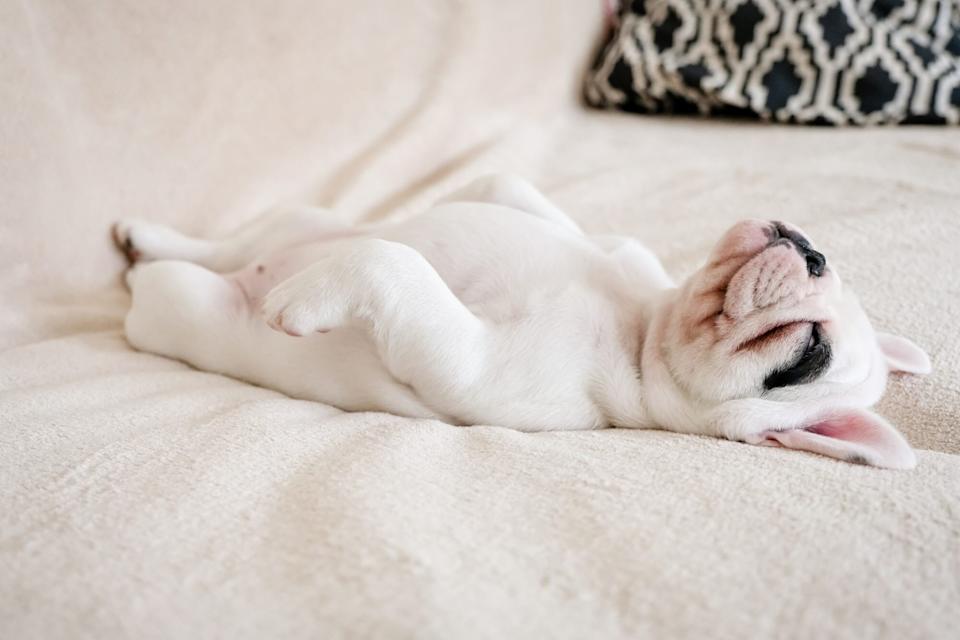Do Dogs Have Belly Buttons?
Ever go looking for your dog's belly button but were hard-pressed to find one? Do dogs even have a belly button? They do indeed. In fact, all mammals except marsupials like kangaroos have one.
The belly button, or umbilicus as it's called in medical lingo, is simply a residual scar that's usually almost imperceptible to see and is where the placenta from the mother is attached to the puppy in the womb.
Once the pup is born in its sac of fluid, the mother breaks the sac and chews the umbilical cord off an inch or so from the puppy's belly. Over the next few days, the stump dries up and falls off. The only remaining evidence is a small flat scar, the belly button.
Innie or Outie?
Dogs don't have innies or outies like people do. If your dog does have any protrusion of his belly button, it's likely a hernia that should be immediately evaluated by your veterinarian. Dr. Margret Casal, associate professor of medical genetics at the University of Pennsylvania School of Veterinary Medicine said if you do see an outie on a puppy, it's considered a hernia that needs treatment by a veterinarian.
While hernia can occur in any breed, some breeds are more prone to them including beagles, Pekingese, Basenjis, and Airedale terriers. If you have a puppy, you should keep an eye on their belly area in their first few months of life to make sure a hernia doesn't develop.

Getty Images
How to Find a Dog's Belly Button
If your dog is especially hairy, you may not even be able to find his belly button. Even with dogs that have short or light hair on their bellies, it's sometimes difficult to see. Look for it around the base of your dog's ribs in the middle of the abdomen where tufts of hair meet. You're looking for a barely visible vertical scar. It can also look like a wrinkle, an oval, or a rosette scar.
Unlike some human babies, dogs pay little attention to their belly buttons. There are several theories as to why dog's belly buttons aren't as prominent as humans, said Dr. Casal.
One thought is that humans tie the umbilical cord while dogs chew it, which might account for the difference. A puppy's umbilical cord is also smaller in size and diameter, making a way less noticeable belly button.
Next time you're rubbing your dog's belly, take a look and see if you can spot her belly button.
